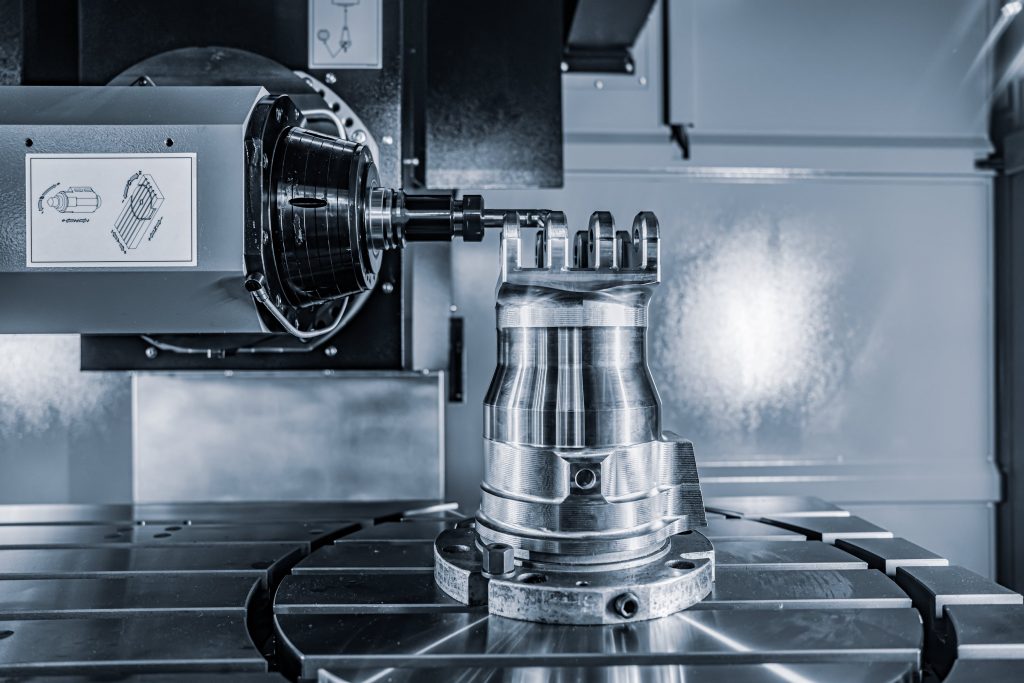Turning and milling are two of the most widely used machining processes in modern manufacturing, forming the foundation of precision component production. Both rely on controlled material removal to shape raw workpieces into accurate, functional parts used across every major industry—from aerospace to automotive. Understanding how these processes work—and how they differ—is essential for optimizing production, improving accuracy, and selecting the right method for each application.
What is Turning?
Turning is a machining process where the workpiece rotates while a stationary cutting tool removes material to achieve the desired shape and size. It is typically performed on a lathe, making it ideal for producing cylindrical, conical, or threaded components. Common turning operations include facing, taper turning, threading, boring, and grooving.
CNC turning centers enhance this traditional process through automation and precision control. By programming spindle speeds, feed rates, and tool paths, manufacturers can achieve consistent tolerances and surface finishes across large production batches. Advanced models feature live tooling and sub-spindles, enabling secondary operations such as drilling or milling without removing the part from the machine. Turning is essential for producing shafts, bushings, couplings, and precision components used in rotating systems.
What is Milling?
Milling involves a rotating cutting tool that moves along multiple axes to remove material from a stationary or moving workpiece. The process can create flat surfaces, slots, pockets, holes, and complex 3D contours with high precision. Milling machines come in several configurations—vertical, horizontal, and multi-axis—each suited for specific applications and part geometries.
Modern CNC milling machines use computer control to synchronize tool motion across three to five axes, enabling intricate machining with superior accuracy. Vertical machining centers (VMCs) are commonly used for general-purpose work, while horizontal machining centers (HMCs) provide better chip evacuation and stability for large or heavy parts. Five-axis milling machines take this a step further, allowing simultaneous rotation and tilt to machine complex freeform surfaces in a single setup.
Differences Between Turning and Milling
While both turning and milling are subtractive machining processes, they differ fundamentally in how material is removed, the types of parts they produce, and how the machines operate. Understanding these distinctions helps in selecting the most efficient process for each manufacturing requirement.
Motion and Cutting Action
In turning, the workpiece rotates while a stationary or linearly moving cutting tool removes material along its surface. This rotational motion makes turning ideal for producing round, conical, or cylindrical shapes.
In milling, the situation is reversed — the cutting tool rotates while the workpiece remains stationary or moves along a fixed path. This allows for greater control over multiple surfaces and angles, enabling the creation of complex geometries such as pockets, slots, and contours.
Type of Components Produced
Turning is best suited for axially symmetrical components—such as shafts, rods, bushings, and pulleys—where the primary material removal occurs around the circumference. The process ensures consistent diameters and smooth surface finishes along rotational parts.
Milling, on the other hand, excels in machining non-rotational or prismatic components, including brackets, housings, and molds. Its ability to operate along multiple axes allows for the creation of intricate shapes and precise flat or contoured surfaces.
Machine Configuration and Axes
A lathe (used for turning) typically operates along two axes (X and Z), though advanced CNC turning centers may include a Y-axis or live tooling for added functionality. The setup is relatively compact, designed for efficiency in rotational machining.
A milling machine operates across three to five axes, allowing simultaneous movement in multiple directions. This flexibility makes it ideal for complex part geometries and detailed surface machining. Multi-axis milling is commonly used in aerospace and medical industries, where precision and contour accuracy are paramount.
Cutting Efficiency and Material Removal Rate
Turning generally offers higher material removal rates on round parts because of its continuous cutting action and stable workpiece rotation. It’s particularly efficient for roughing operations and long production runs of identical parts.
Milling, by contrast, provides superior versatility and detail but with intermittent cutting, which may result in slightly lower removal rates. However, modern high-speed milling technologies and advanced tooling have narrowed this gap considerably.
Surface Finish and Accuracy
Turning produces excellent surface finishes due to its constant cutting contact and smooth tool motion. This makes it the preferred process for parts requiring fine dimensional accuracy and concentricity.
Milling can achieve high precision and surface quality, particularly on flat or contoured surfaces, but may require additional finishing steps depending on the toolpath strategy and cutting conditions.
Integration in Modern Machining
In today’s manufacturing environments, the distinction between turning and milling is increasingly blurred. Mill-turn centers and multi-tasking CNC machines combine both processes in one setup—allowing complex parts to be completely machined without repositioning. This integration reduces setup time, enhances geometric accuracy, and boosts overall productivity.
Conclusion
CNC milling and turning together represent the cornerstone of subtractive manufacturing, combining speed, precision, and versatility to produce parts that meet the highest engineering standards. With advances in CNC technology and multi-axis control, both processes have evolved into highly automated, data-driven systems capable of achieving exceptional accuracy and consistency. The integration of turning and milling in hybrid machines has further enhanced manufacturing flexibility, reducing setup time and improving part quality. As industries demand faster, more complex, and more sustainable production methods, these machining processes continue to play a vital role in shaping the future of manufacturing.






















